PRECIOUS STONES OF THE BIBLE
Throughout history, in every civilization, gemstones have been highly prized and sought after. The Bible makes numerous references to jewels and precious stones. In Exodus 28:21 the Lord ordains precious stones to be used in the making of the breastpiece of the High Priests’ garments. Zechariah 9:16 says that the Lord’s people will be like jewels in a crown. In Revelation 21:19-20, John names twelve stones that adorn the foundation of the New Jerusalem. The difficulty has been in knowing the exact identity of the stones named. It has only been since the mid-1800’s that we have begun to identify stones according to their mineral content. In Bible times stones were identified by color, such as the Hebrew term odem which simply means “red stone.” This could have been any number of red stones known at the time (i.e. red jasper, carnelian, garnet). As more information surfaces thanks to archaeological findings and the writings of ancient historians such as Theophrastus (372-287 BC), Elder Pliny (23-79 AD), and Josephus (37-100 AD), we are able to come a bit closer to making some identifications sure.
AGATE
Ex 28:19, 39:12
Agate
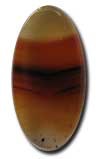
Agate is named as the second stone in the third row of the High Priest’s breastplate. Agates are a form of chalcedony (a fine-grained variety of quartz) that are banded or lined in a variety of patterns of colored layers. Colors range from white to dull yellow, red, brown, orange, blue, black and gray. The Hebrew word for agate is shebo which literally means “to flame, split into tongues.” “Agate” comes from the Greek word, achates, which is the name of the river in Sicily where agate was mined in abundance as early as 3000 BC. Agates were highly prized among ancient civilizations. It was fashioned into beads, pins, brooches, signet rings, goblets, cups, bottles, bowls, and carved figurines. Large amounts of agate have been found in archaeological digs of Sumer, dating back to 3500 BC. Theophrastus (372-287 BC) appears to have been the first man to write about agates. In his work, Concerning Stones, he notes that agate is a “marvelously beautiful stone” and usually sold at high prices.
AMBER
Ezek 1:4, 27; 8:2
Amber
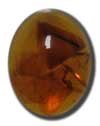
Amber is the fossilized resin of pine trees. It ranges in color from golden yellow to orange-brown. In the KJV, amber is mentioned three times by Ezekiel (Ezek 1:4, 27; 8:2). Other versions use the terms glowing metal or gleaming bronze. It is the Hebrew word hashmal. The exact original meaning of the word is uncertain. The Brown-Driver-Briggs dictionary defines hashmal as "a shining substance, amber or electrum or bronze." The Revell Bible Dictionary says, "While the root meaning remains uncertain, all scholars agree that the image, used to describe the visible glory of God, conveys the sense of brilliance." Ancient Greeks called amber "electrum." The Elder Pliny (23-79 AD) described amber's magnetic attraction, how that when rubbed it would become electrically charged and attract such things as straw, hair, dry leaves and feathers. This is where we get the word electricity. Amber is one of the oldest gemstones, having been found in archaeological digs of tombs dating to the Stone Age. The most valued amber (even today) is that which contains an inclusion of an insect.
AMETHYST
Ex 28:19, 39:12, Rev 21:20
Amethyst
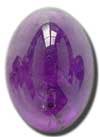
Amethyst is a variety of quartz that is best know for it's rich, violet-purple hue. The color can vary in intensity from a pale, almost pinkish (mauve) color to a dark purplish violet. It is thought that the color of the stone comes from small amounts of iron in the quartz. Amethyst is the third stone in the third row of the High Priest’s breastplate (Ex. 28:19) and the twelfth stone listed in the foundation of the New Jerusalem (Rev. 21:20). It is one of the few stones in which experts agree as to the correctness of the name. The Hebrew word for amethyst, ahlamah, literally means “dream stone,” and it was thought that it induced pleasant dreams. The Greek name for the stone, amethustos (from which we get “amethyst”), literally means “not drunken” and it was believed that the gem guarded one against intoxication. Beautifully carved and engraved amethyst goblets, vases, charms and miniatures have been found in excavations. Historically amethyst has been highly valued as a precious stone for the uniqueness of it's color, as there are few purple gemstones.
AQUAMARINE (BERYL)
Rev 21:20
Aquamarine
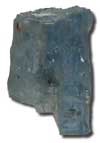
Aquamarine is a light blue or bluish-green variety of beryl. Historians have likened it to “a thousand leagues of sunlit sea imprisoned in a cup.” It’s very name is descriptive of it’s color: aqua meaning water and marine meaning sea. Aquamarine was the most available variety of beryl during Bible times, while the emerald (also a beryl) was more rare. The term aquamarine is not used by any of the Bible translators, but many scholars believe that the aquamarine was the type of beryl (Gr berullos) of the eighth stone of the New Jerusalem (Rev 21:20). The Roman historian and writer, Elder Pliny (23-79 AD), describes the color and characteristics of the aquamarine in his description of the berullos stone of his time. At that time, emeralds, though also beryl, were called by another name, smaragdos (this being the fourth stone in the New Jerusalem). See Beryl, Emerald
BERYL
Ex 28:19, 39:12, Ezek 28:13, Rev 21:20
Beryl
Beryl (Gr. berullos) is the 8th stone in the New Jerusalem. Beryl is the true name of several very important gemstones, yet a term not often used. The best known beryl are the emerald (grass green in color), and the aquamarine (blue-green). Both of these stones were well known in Bible times, the aquamarine being the most common. Pliny the Elder (23-79 AD) who was a historian at the time the Book of Revelation was written, describes the beryl (berullos) of that day, “The lapidaries cut all beryls of a hexagonal form because the color...is heightened by reflections resulting from the angles. The most esteemed beryls are those which in color resemble the pure green of the sea.” This would seem to indicate the aquamarine as being the beryl of choice in that time. Now, of course, the emerald is considered the most valued of the beryls. Beryl is a silicate of beryllium and aluminum, occurs in hexagonal, prismatic crystals and is very hard as a mineral, measuring 8 (on a scale of 1-10). See Aquamarine and Emerald
CARNELIAN (SARDIUS)
Ex 28:19, 39:10; Rev 4:3, 21:20
Carnelian
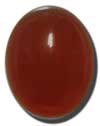
Carnelian is a translucent, hard, fine-grained variety of orangish red quartz that has often been used for ring stones and wax seals. Carnelian has been frequently discovered in excavations of the ancient tombs of royalty. A necklace more than 10 feet long and containing 670 orange-red carnelian beads was found in the tomb of a queen dating 1000 BC. A string of expertly carved carnelian beads was found in Egypt dating back to 3100 BC. Carnelian is the modern word for the stone translated as sardius in the KJV. The Greek word is sardios and is found as the 6th stone of the New Jerusalem (Rev 21:20), and in the description of the Lord in Rev 4:3. The Hebrew word odem (literally redness or red stone) is translated by some Bible scholars as sardius (today’s carnelian). Odem is the stone listed as the first stone in the breastplate in Exodus. Odem here could have been any one of several red stones known to the ancient Hebrews; the garnet or red jasper, as well as the sardius (carnelian).
CHALCEDONY
Rev 21:19
Chalcedony
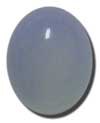
Chalcedony is a cryptocrystalline (having crystals so small they cannot even be seen with a microscope) variety of quartz. It has a waxy luster and can be semi-transparent to translucent. There are many varieties of chalcedony, but most of them are known under different names and are distinguished by their color (i.e. chrysoprase is apple green, carnelian is red, onyx is black and white stripes, sardonyx is red and white stripes, and agate is banded in many colors). Specimens that are called by the name chalcedony are generally milky white, light gray, blue and yellowish brown in color. Chalcedony in gem form is general cut in cabochons, as it is not well suited for faceting. In Bible times, chalcedony was used extensively in the carving of seals, signet rings, beads, bowls, goblets, glasses, and other household objects. The word “chalcedony” is derived from the name of the ancient Greek town, Chalkedon, in Asia Minor, in modern English usually spelled Chalcedon. It is listed as the third foundation stone of the New Jerusalem.
CHRYSOPRASE
Rev 21:20
Chrysoprase
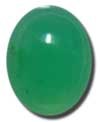
Chrysoprase is a translucent, bright apple or grassy green variety of chalcedony. The green color comes from nickle. It is the most valuable variety of chalcedony. Chrysophrase is listed as the 10th stone in the foundation of the New Jerusalem. The modern word comes from the Greek chrusoprasos and literally translated is chrusos meaning “golden” and prason meaning “a leek” indicating the color of the stone. Chrysoprase has been discovered in archaeological digs in ancient Egypt. A necklace which included chrysoprase beads was found on a mummy dating back to 1500 BC. The most famous deposits of chrysoprase came from Silesia (a former Prussian province). During the Middle Ages, it was believed that if one who was condemned for crime held the stone in his mouth he would escape the just punishment of his crime. Though obviously there is no merit to this belief, it is a delightful picture of the redemptive work of Jesus (our Rock) and the scripture that says, “it is with our mouths that we confess and are saved,” escaping our just punishment.
CRYSTAL
Job 28:17, Isa 54:12, Rev 4:6; 21:11; 22:1
Crystal1
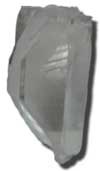
Rock crystal is a colorless, transparent, coarse crystalline quartz. Quartz is one of the most common minerals found nearly everywhere In the world. Rock crystal is very abundant and can occur in single crystals that can weigh several tons. The largest recorded crystal, found in Brazil, was 20 feet long, several feet thick, and weighed more than 44 tons. Ancient peoples developed many uses for crystal. Quartz crystal lenses were found in the ruins of Nineveh (3800 BC). Lenses such as these may have been used for magnifying, burning or even cauterizing wounds. Egyptians mined crystal as early as 3500 BC. The Romans carved vases, bowls, and goblets from larger blocks of crystal. Small, natural crystal was often used uncut as jewelry - either strung or placed in a setting. The Greek word for crystal is krustallos or “ice” because they believed that it was formed from water exposed to extreme cold. This belief persisted until the nineteenth century! The Hebrew word literally means “transparent” and can be used for ice, glass or crystal.
CORAL
Job 28:18, Ezek 27:16
Coral
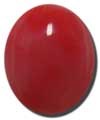
Coral is a limestone formation of calcium carbonate produced by the skeletons of millions of tiny marine animals (polyps). Because it is of animal origin it is not technically considered a mineral. Gem quality coral or precious coral is only found in a few places in the world, one being the warm waters of the Mediterranean Sea which produces some of the very finest. It is unique in that it has an internal skeleton which can be polished bringing out it’s beautiful shades of red. It grows in bush-like clumps of branches about a foot high and must be harvested while still living to preserve the color. If the polyps die before a branch reaches the surface, the coral turns dark and loses its value. This precious coral has been harvested from the earliest times and prized by many civilizations. Many specimens of polished branches mixed artfully with beads have been discovered in early Egyptian jewelry. Coral is mentioned several places in the Bible (scripture references vary according to version). Discrepancies are common with gemstones because the meanings of some of the original words have been lost over time.
DIAMOND
Ex 28:18, 39:11, Jer 17:1, Ezek 28:13
Diamond

Diamonds are the most highly prized gemstones in the world, mostly due to their many qualities and few weaknesses. Diamonds are pure elemental carbon. They are the hardest of all gemstones. The diamond has the highest melting point of any substance (3,820 degrees Kelvin), is an excellent heat conductor, and has very low reactivity to chemicals. Diamonds are made of carbon - the most common substance on earth - formed deep within the earth under extreme heat and pressure. The English word “diamond” comes from the Greek word adamas meaning “the invincible.” Only the KJV uses the term diamond in its translation (see scripture references above). The diamond was probably not true identity of these stones because the diamond was not identified in the Mediterranean lands until the first century AD, and then it was not valued for it’s beauty as a decorative gemstone, but for it’s use as a tool for carving other stones due to it’s hardness. The first definite reference to it is found in the Latin poetry of Manilius about 12 AD, and Elder Pliny describes diamond crystals from India about 77 AD.
EMERALD
Ex 28:20, 39:13, Ezek 28:13, Rev 4:3, 21:18
Emerald
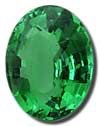
Emeralds are the valuable and highly prized grassy-green variety of beryl. Emeralds were well known among the people of the Bible lands. One of the earliest known source of emerald were mines located near the Red Sea in Egypt. There is evidence that these mines were in operation as early as 1650 BC (the time that the Hebrew people would have been in Egypt). Later these mines became known as Cleopatra’s Mines, who was quite fond of emeralds and was reported to wear them to enhance her beauty. Emeralds were engraved with her likeness and given as gifts to her guests. The word emerald comes from the Greek word smaragdos by way of the French word for emerald esmeralde and simply means “green gemstone.” The emerald (Gr. smaragdos) is the fourth stone of the New Jerusalem. Most scholars agree that the emerald was the stone meant here. According to the Encyclopedia Judaica, the Hebrew word for emerald is most likely bareqet, which is the third stone in the first row of the High Priests’ breastplate. Most Greek versions translate bareqet as smaragdos.
GARNET
Garnet
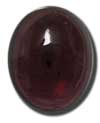
The word “garnet” comes from the Latin “granatum” (the pomegranate) having to do with the red color of the stone. It is a brittle, hard, glassy, mineral silicate. Though the word “garnet” is not found in any of the translations of the Bible, garnets were a common stone in Bible times. It is very possible that it was a garnet that was used for the 1st stone in Aaron’s breastpiece. The Hebrew word here is odem which simply means “red” and could have been any number of red stones (though most likely not the ruby as they were not in use until 300 BC). The garnet, however, has been found as early as the Bronze Age, in Egyptian jewelry, dating back to 3100 BC. The Greeks used garnets as signet rings with found artifacts dating around 400 BC. Due to their color, garnets , have been closely associated with blood, as have other stones that are red. They also have the distinction throughout history of often being mistaken for rubies.
JACINTH (HYACINTH)
Rev 21:20
Jacinth
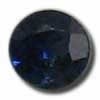
Jacinth is a derivation of the word “hyacinth” which comes from the Greek huakinthos. Most scholars agree that it was some kind of blue stone, taking it’s color from the flower. It is the 11th foundation stone in the New Jerusalem. Pliny (AD 23-69) describes the hyacinthus as being very different from amethystus, "though partaking of a color that closely' borders upon it" and as being of a more diluted violet, It is held that the jacinth/hyacinth may actually be the sapphire of today.
JASPER
Jasper
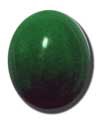
Ex 28:20, 39:13, Job 28:18, Ezek 28:13, Rev 4:3, 21:11,18,19
Jasper is an opaque variety of chalcedony (quartz). It is most commonly red due to the presence of iron, but can also be found in yellow, brown and green.”Jasper” comes from the Greek word iaspis which is a derivation of the Hebrew word yashepheh coming from a root word meaning “to polish”. In fact, one of the characteristics of jasper is that it is able to take a high polish and was used in ancient times as mantles, pillars, vases, and other interior decorations. Jasper is named as the 12th stone in Aaron’s breastpiece. Scholars think that the yashepheh here actually refers to a green form of Jasper - which was very rare, and highly prized. Jasper (iaspis) is mentioned in several places in Revelation, most noted being the 6th foundation stone of the New Jerusalem. Pliny the Elder who lived and wrote around the same time that the book of Revelation was written, describes iaspis as “being green and often transparent” which is of interest since today we consider jasper to be opaque.
LAPIS LAZULI
Lapis Lazuli
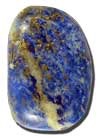
Lapis Lazuli is a beautiful, rich ultramarine-blue stone consisting largely of lazurite and speckled with yellow pyrite. Lapis was one of the most sought after and prized stones of ancient times. It was used for jewelry, ornamentation, seals, and amulets. It was also used extensively for inlaying. Egyptian blue paint was made from finely ground lapis. This stone has been found in abundance in archaeological digs of ancient civilizations, including King Tut’s tomb which held many beautiful specimens of lapis jewelry dating to 1350 BC. Mines in Afghanistan have been producing gem lapis lazuli for nearly 5000 years and are still the worlds largest producer of the material. Most scholars agree that lapis lazuli is actually the stone meant for the term “sapphire” in the Bible. Sapphires were not known before the Roman empire and were initially considered to be jacinth. The Elder Pliny (AD 23-69) gives a description of sappir (translated by most as sapphire) as being like the night sky, spangled with stars, and Theophratus (372-287BC) describes “sappir spotted with gold.” These descriptions definitely indicate the lapis lazuli. See Sapphire
ONYX
Gen 2:12, Ex 28:20, Job 28:16, Ezek 28:13
Onyx
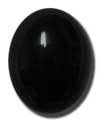
Onyx is chalcedony that has even, banded layers of various color (most typically black and white). The Greek word for onyx is onux literally “the nail of a finger” which implies the banding of color for which the stone is known. Onyx has been very popular through the ages as the stone used for engraving cameos. The carving of cameos came into great popularity with Alexander the Great. His handsome features and classic profile became a favorite subject of engravers. Prior to this time onyx was used extensively for carving seal rings. These seal rings were most often cut as intaglios where the design is cut down into the stone, so that when it is pressed into the seal material (clay or wax) the impression leaves a raised design. The Hebrew word shoham is most often translated as onyx and is the second stone in the 4th row of Aaron’s breastpiece. There has been a lot of question about whether the shoham stone is indeed the onyx, however, Josephus (Jewish historian AD 37-100) who had personal access to the breastpiece in his time, clearly identifies the shoham stone as the onyx.
PEARL
Matt 13:46, Rev 21:21
Pearl
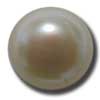
The pearl holds the distinction of being the only gem that is formed within a living organism. A pearl is made when an irritant, such as a grain of sand, finds its way into the soft tissue of the oyster. To protect itself, the oyster begins to cover the irritant with sheets of nacre. Nacre is the smooth lining material that these mollusks produce that covers the insides of their shells. Layer upon layer of nacre is applied to the irritant, producing, over a period of 1 - 3 years (or more), one pearl. Pearls were considered among the most precious stones in the ancient world. In the Roman empire at the time of Christ pearls became quite the rage. Julius Caesar, who had a particular love for pearls, paid the equivalent of $1,000,000 for a single pearl. This gives significance to Jesus’ story about the “pearl of great price.” For many centuries the pearl was known as the “Margarite” from the Greek word for pearl, margarites, which is the name of the oyster that produces the pearl found in the Persian Gulf and Red Sea, margaritafera vulgaris. It was not until the King James Version of the Bible that the term pearl was used.
PERIDOT (CHRYSOLITE)
Rev 21:19,20
Peridot
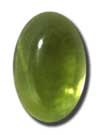
Peridot is the modern name for chrysolite which is a lovely, transparent, gem from the mineral olivine. It’s color, which ranges from yellow-green to a deep bottle green comes from the presence of iron. Peridot (or chrysolite) has been known since Biblical times with the earliest source being St. John’s Island in the Red Sea off the Egyptian Coast. From here the identification of Bible stones gets very interesting. It appears that the identity of two stones, the chrysolite (or peridot) and the topaz have completely switched. According to Pliny (AD 23-69), the topaz (Gr. topazion) was a stone found and mined on the island of Topazios (today called St. John’s Island off the coast of Egypt). This is the world’s principle source for the peridot (chrysolite). No topaz as we understand it today has been found there. So the term topaz of Bible times was actually the peridot (or chrysolite) of today. Conversely the term chrysolite in the Greek is actually the Topaz of today. See Topaz
RUBY
Ex 28:17, 39:10; Prov 8:11, 31:10, Job 28:18, Ezek 28:13
Ruby
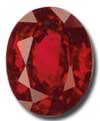
Rubies are the red gem variety of the mineral corundum. Rubies get their red color from traces of chromium. All other colors of corundum are called sapphire. Rubies are the among the hardest of the gemstones with only the diamond being harder. Called “king of the gems” in some ancient cultures, rubies are considered the rarest and most precious gemstone in the world. They are generally not as large as some of the other gemstones. While sapphire, diamond and emerald gems weighing hundreds of carats exist, high quality rubies of even 20 carats are rare. The price of a gem-quality ruby will far exceed the price of a diamond of the same size. Rubies did not come into use until the Roman Empire around 300 BC. There have been no rubies (or diamonds or sapphires) found in any excavations of early Egyptian civilization. There are several places in the Old Testament where ruby is the term used in the translation of various stones. In these cases it is most likely that some other red stone is the true identification (i.e. red coral, pink pearl, carnelian, garnet)
SAPPHIRE
Ex 24:10; 28:18; 39:11; Job 28:6,16; Song 5:14; Isa 54:11; Ezek 1:26; 10:1; 28:13, Rev 21:20
Sapphire

The gemstone, sapphire, that we know today is the blue, translucent variety of corundum. The sapphire gets it’s blue color from small amounts of iron and titanium and ranges from a pale, ice blue to deep cobalt blue. Kashmir, India was one of the earliest sources of fine sapphires. These mines produced a cornflower blue sapphire to which all other sapphires are compared. Our modern term sapphire comes from the Greek sapphiros which is from the Hebrew sapir (or capir). The term sapphire appears many times in the Bible (see references above), however, the stone we associate with sapphire today was not known in Bible lands until the Roman Empire (300 BC). Initially they were considered forms of jacinth. The sapphiros of the Bible is described by historian Elder Pliny as "refulgent with spots like gold. It is also of an azure color...the best kind being that which comes from Media. In no case, however, is this stone transparent." These characteristics describe more accurately the lapis lazuli, and not the sapphire of today. See Lapis lazuli and Jacinth.
SARDONYX
Rev 21:20
Sardonyx
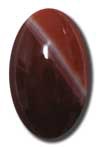
Sardonyx is a variety of chalcedony (fine-grained quartz) that has alternating bands of reddish-brown and white. Early Roman writers spoke of sardonyx as a “gem of great value.” Sardonyx made beautiful cameos, and was often extravagantly carved. The Romans developed this craft of engraving into a fine art. Great quantities of quality sardonyx came from India during this time. Even Julius Caesar, the Roman general, became an avid collector of engraved sardonyx. The word sardonyx comes from the Greek sardonux, and has remained relatively unchanged for centuries. It is a combination of sard (the stone carnelian) and onux (nail of the finger; the stone onyx) and indicates the layers of color found in the stone. It is possible that the sardonyx of Bible times was not limited to the reddish-brown and white stripes. Pliny the Elder (AD 23 - 69) describes imitation sardonyx made of a triple stripe of quality white, red and black stone cemented together. Sardonyx is the 5th foundation stone of the New Jerusalem. Josephus the Jewish historian indicates this stone was used for the shoulder pieces of the ephod.
TOPAZ
Ex 28:19, 39:12, Ezek 28:13, Job 28:19, Rev 21:20
Topaz
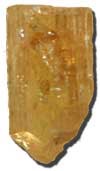
The topaz of today is a mineral that is composed of aluminum, silicon, oxygen, and fluorine. It occurs in many colors, including deep golden-orange, yellow, brownish-yellow, pink, red, and various shades of blue. It may also be colorless. Topaz comes from the Greek word topazion, named for the island, Topazios, located in the Red Sea off the coast of Egypt. The gemstone which was mined on this island was actually the peridot (chrysolite) of today. Thus the term topaz in the Bible actually refers to the peridot (chrysolite). However when Pliny (the natural historian during the time when the book of Revelation was written) describes the chrysolite (Gr. chrusolithos), he describes today’s topaz. The term chrusolithos literally means ” gold stone” and very likely refers to the yellow topaz of today. Both the topaz and chrysolite (today called peridot) are stones in the foundation of the New Jerusalem. See Peridot (Chrysolite)
TURQUOISE
Ex 28:18; 39:11; Ezek 28:13
Turquoise
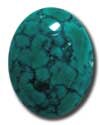
Turquoise is hydrous compound of phosphorus, aluminum and copper. It is opaque, blue to blue-green in color with a dull, waxy luster. Turquoise is not mentioned in the KJV of the Bible, but it can be found in references in some of the newer translations. There are many differences among scholars as to the identification of many of the stones of the Old Testament, but due to the widespread use of turquoise in those times it is very likely that one of those obscure terms refers to this beautiful gemstone. Turquoise specimens have been found in excavations of early civilizations such as Sumer (3500 BC). Turquoise was used by the Egyptians of the First Dynasty (3000 BC) who mined it at Serabit on the Sinai Peninsula. Turquoise was one of the first gemstones to be mined and some of the oldest known mines come from this region, which is called "Country of Turquoise" by the native peoples. Turquoise was used for jewelry, beads, amulets and inlaying on furnishings. It has been found in the palaces and tombs of kings. It is soft and therefore easily shaped and polished.
The Biblical Meanings of the Colors of the Stones of the Bible
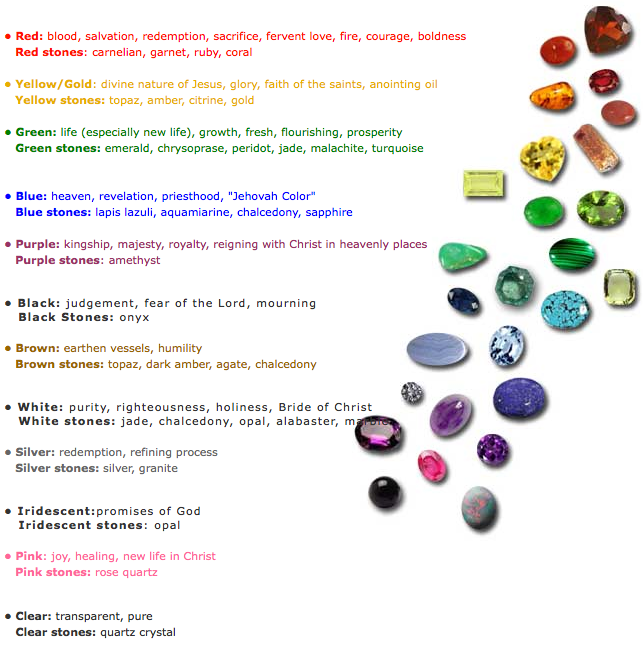
There are still many mysteries as to what the Bible stones were known as and used for. They are beautiful and I enjoy studying the Biblical meaning locked up inside each one. I hope You do too!
